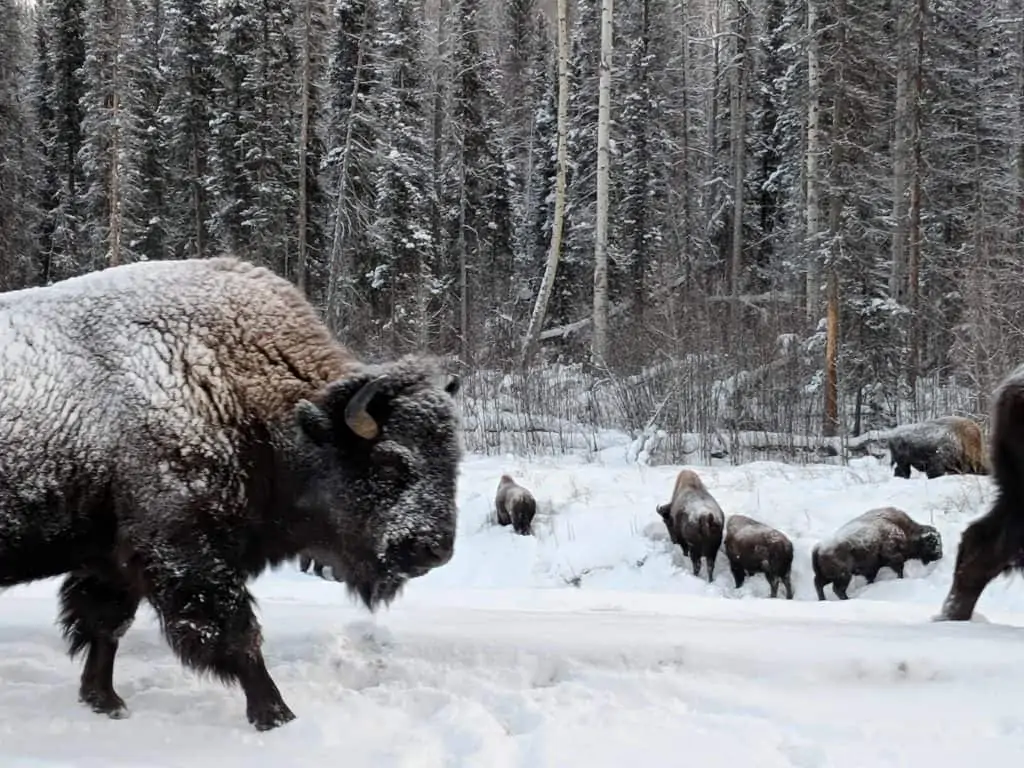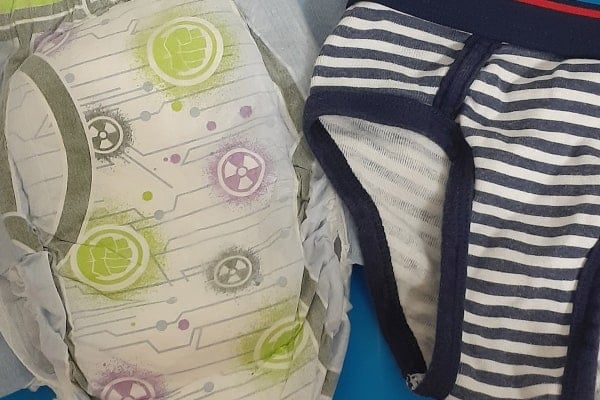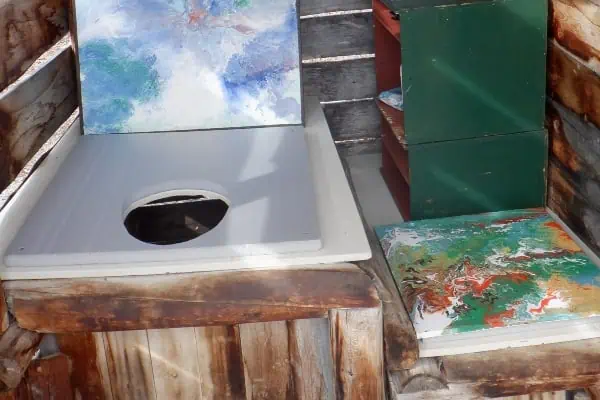Most hunting trips start with a lot of planning: What happens when something goes wrong? Where are we going for a particular time of year, and How do I know if I am on the right track?
Our first bison hunt started with a workshop, in Whitehorse, led by the Conservation Officer Services in conjunction with the Yukon Fish and Game Association. The information was plentiful and I recommend people taking these few hours of lessons prior to bison hunting.
There is a section in the discussion relating directly to what bison poop looks like: they talked about how you can identify a location where bison have been. You know one simple thing: What does bison poop look like? The workshop continues with a lot more, and one can get lost in the intricacies of the information, like I did. The part I thought was most important was shot placement, as bison are a little different from other animals in the Yukon. Not being on a bison hunt before, there was a lot to take in.
There were still a couple hours of darkness left, as we rolled out of Whitehorse eastbound for our first winter bison hunt. It was a welcoming -18, the forecast for the day was looking great and we were excited to get on the trail. As we pulled off the highway into a well-known starting point, my spirits were high, the weather was great and we were hoping to find a bison.
The first three pulls on the snowmobile cord left only silence (the day before it took two pulls to get it going). I primed the machine, one more time, gave it a full choke and, again, nothing. Worry was starting to set in … one more shot of gas, full throttle and hope for a little luck. The machine fired, sputtered and then white smoke filled the air as she came to life. Now we were going on a bison hunt.
About an hour down the trail, the sun had come up enough that we could see without headlights. We scanned all of the hillsides, glassed every opening and hoped for a bison to show up in the binos. We saw a trail through the willows at one opening. Quickly dropping our warm gear, we were off, on foot, following fresh tracks. Weaving in and out of the willows, we wondered why the bison would be in a spot like this. Carrying on for 10 minutes or so, we ran into a pile of poop. It was a moose. Very distinguishable by the oval pellets … We were a little disappointed, but lesson learned.
Back on the trail, a short while later, we ran into more tracks. This time we were a little more hesitant to just walk blindly, but there were so many tracks. The area looked like where we were told you might find a bison, so we couldn’t resist. Off came our warm gear, again, and we walked the outskirts of the tracks, trying to find which way the group left the area. Typically, there are a lot of tracks, all over, and piles of poop randomly in the mix when the group is in the area for any amount of time. Unfortunately, we did not know this in our early bison-hunting days, so we followed the tracks again until we found what we believed was the right path.
Walking for much longer, this time, we were satisfied that the tracks were not that of another moose. We walked slowly and steadily, taking breaks often, and decided to stop for some food. Sitting down for a drink and a sandwich, we could hear a weird noise—not something you would anticipate in the middle of nowhere. It wasn’t trees or wind; it almost sounded like a faint distant bell. We paid it no attention, finished eating, then went back on the path. Minutes later, we found our first sign of poop. This was not what we were told bison poop looked like, either. This was horse crap. We could see and hear the horses, wearing cow bells, wandering through the trees.

By the time we returned to the machines, it was mid-afternoon. As everyone in the Yukon knows, mid-afternoon is almost the end of the day here in December. We had to make the call to look around a little more, but the chances of getting a bison had slipped out of my mind and just seeing a bison would have been great. This was our first winter bison hunt, so while our hopes were high, our expectations were realistic. Traveling on and off the trail, to explore the area, we did indeed find bison poop. A large cow-pie-looking clump was on the trail—then more, and more and more. We found where the bison had been, were able to clearly identify that the poop was from a bison and all the tracks were a little different.
Moose have long legs: they tend not to drag their feet, as much as a horse does, and do not usually mull around in open grassy areas, and tracks in the snow look more like postholes. Horses do seem to be a bit lazier than a moose and seem to drag their feet more. They can be mistaken for bison, occasionally, due to liking the same area and leaving large areas “stating” they were there. Also, there are usually a bunch of horses together—unlike moose, where there may be just a couple. Bison, with their shorter legs and their broad chests, are a little lower and seem to plow the snow out of the way. Sometimes it is hard to tell what animal you are following. When it comes into question, just keep walking … You can clearly see the difference in the poop.




